Wide-Flange Beam to HSS Column Shear Connections and Applicable Limit States
By Mustafa Mahamid, PhD, SE, PE, P.Eng, F.ASCE, F.SEI
FORSE Consulting, Technical Consultant to the Steel Tube Institute
Hollow Structural Sections (HSS) can be utilized as beam, column, brace and truss members within a structure. As with any steel member, the design of the connections is critical to the performance of the member and the entire structural system. Many of the same connections that are used for wide flange members can also be used for HSS members with occasional variations to account for the HSS closed section shape. These connections can be bolted or welded using the same bolt types and similar welding techniques as with other structural steel connections.
Below is a general summary of key items to consider in designing connections to HSS members:
- Due to the flexibility of HSS walls, the local strength of an HSS member at the connection may control the capacity of the connection. This is an important consideration when sizing the wall thickness of an HSS member.
- Reinforcing HSS walls to locally strengthen the member is typically not an available option for fabrication.
- The fillet weld size to HSS members that can be considered in design may be controlled by the strength of the base metal. AISC Design Guide 24, Table 2-3 provides the minimum HSS wall thickness required to develop the full strength of the applied fillet weld.
- For elements connected transverse to the HSS face, the force transmitted through a fillet weld is not uniform due to the variation of flexural stiffness of the HSS wall across its section width. AISC 360-16 Table K5.1 outlines the reduced effective fillet weld lengths for various transverse connection types.
- Additional limit states to consider for bolts in tension fastened to HSS members are pullout and HSS wall distortion. Both limit states are discussed in AISC Design Guide 24,
Section 3.2.
Structural design projects in the U.S. are typically required to comply with the requirements of the International Building Code (IBC). Per the IBC, steel structures must be designed in accordance with the provisions specified by the American Institute for Steel Construction (AISC) in their publications AISC 360 and AISC 341. In addition, AISC has published the Steel Construction Manual, the Seismic Design Manual, and numerous design guides that provide additional information and design aids for the design of steel structures. Within these publications, AISC provides guidance for the design of structural steel connections.
Connections for HSS members are governed by the same limit states as any other structural members and are outlined by AISC. Shear connections, or simple shear connections, are connections where the joint between the members is not required to transfer moment forces and will allow for the natural rotations associated with the member behavior under the applied loads. The most common beam shape connected to an HSS column is a wide-flange.
The common shear or simple connections that are used for connections between wide-flange beams and HSS columns are:
- Single plate connections (both conventional and extended configurations)
- Single angle connections
- Double angle connections
- WT connections
- Unstiffened seat connections
- Stiffened seat connections
- Through plate connections (note that this connection may substantially increase fabrication costs and should be used only when none of the above connections are adequate)
The following shows the common shear connections details used to connect wide-flange beam to an HSS column. Common limit states include bolt shear, bearing at bolt holes, welds, shear and tension rupture, etc. In some cases, there are additional limit states that must be checked for HSS members as well. Table 2 shows the applicable limit states for the various types of connections at HSS members and their references in the AISC Manual, 15th Edition and AISC 360-16. In addition to the limit states, there are some criteria and dimensional constraints that must be taken into account for making these connections to HSS columns.
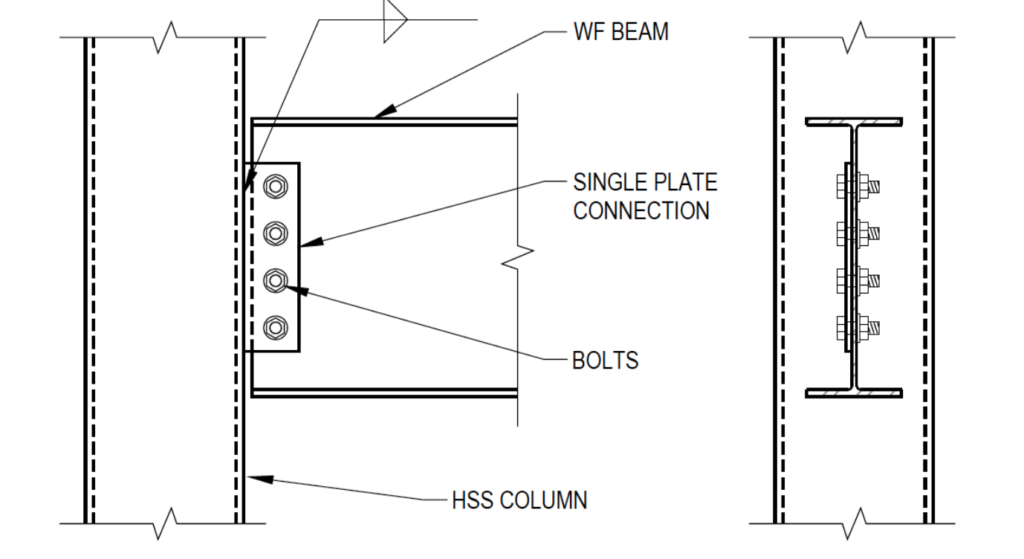
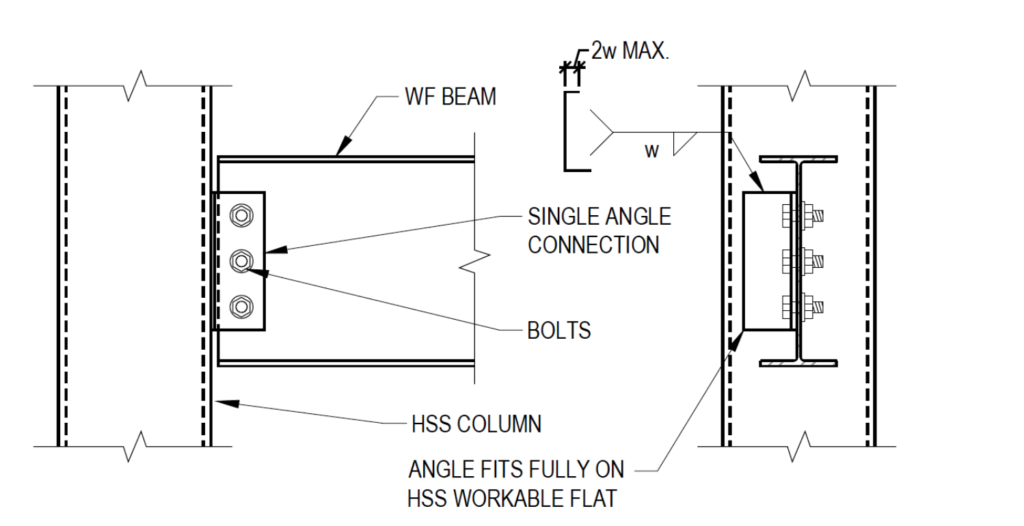
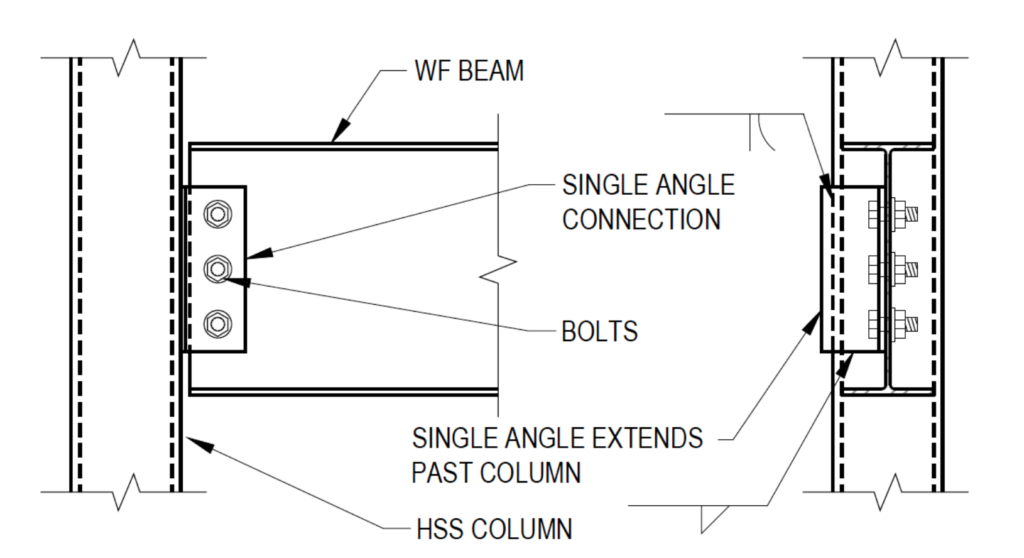
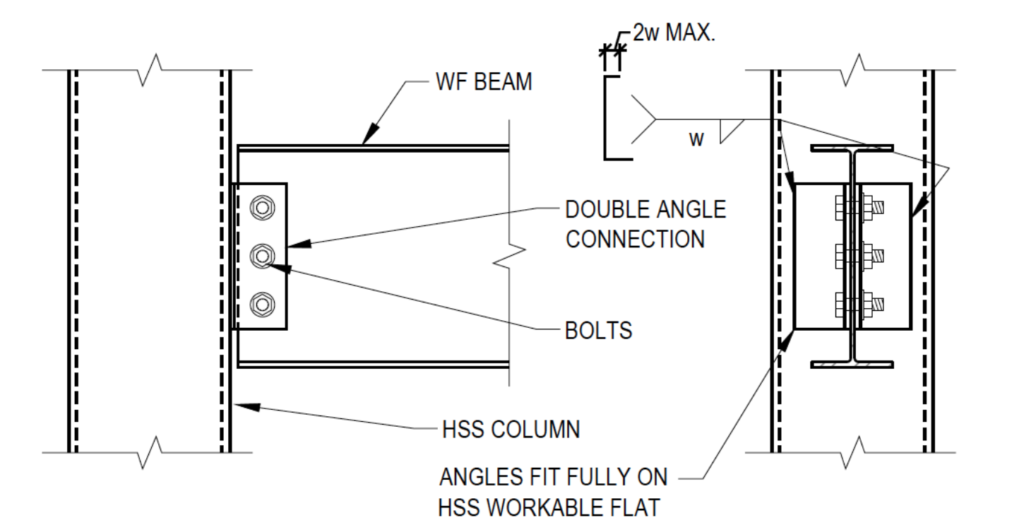
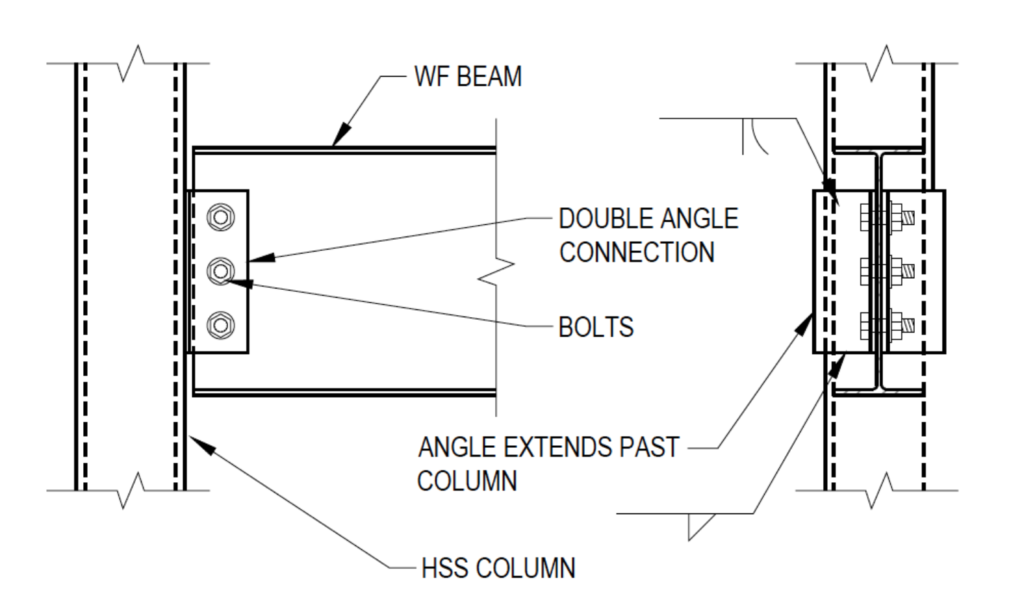
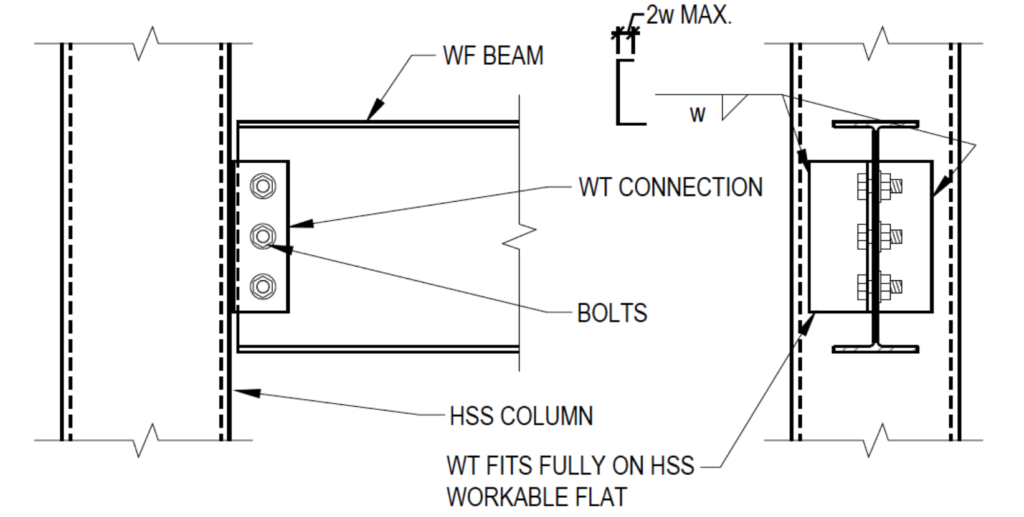
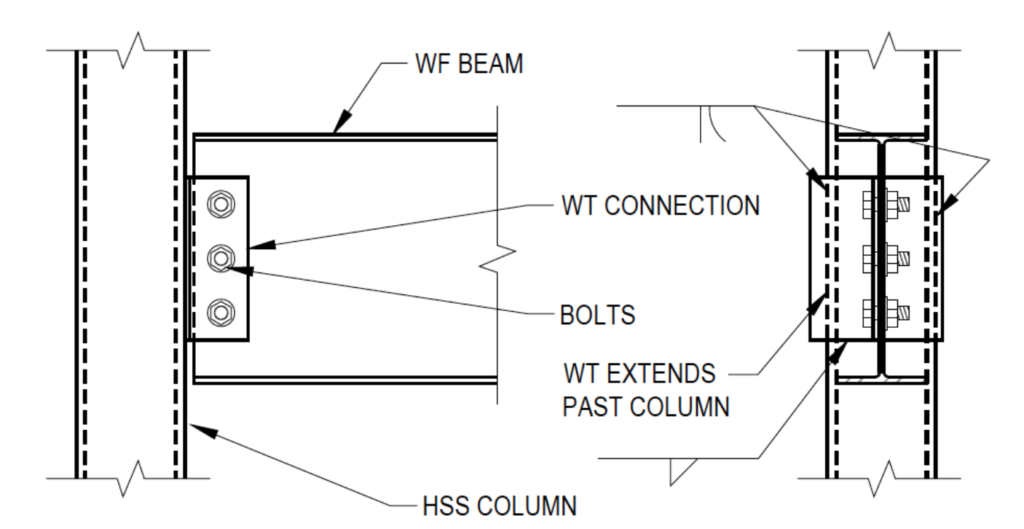
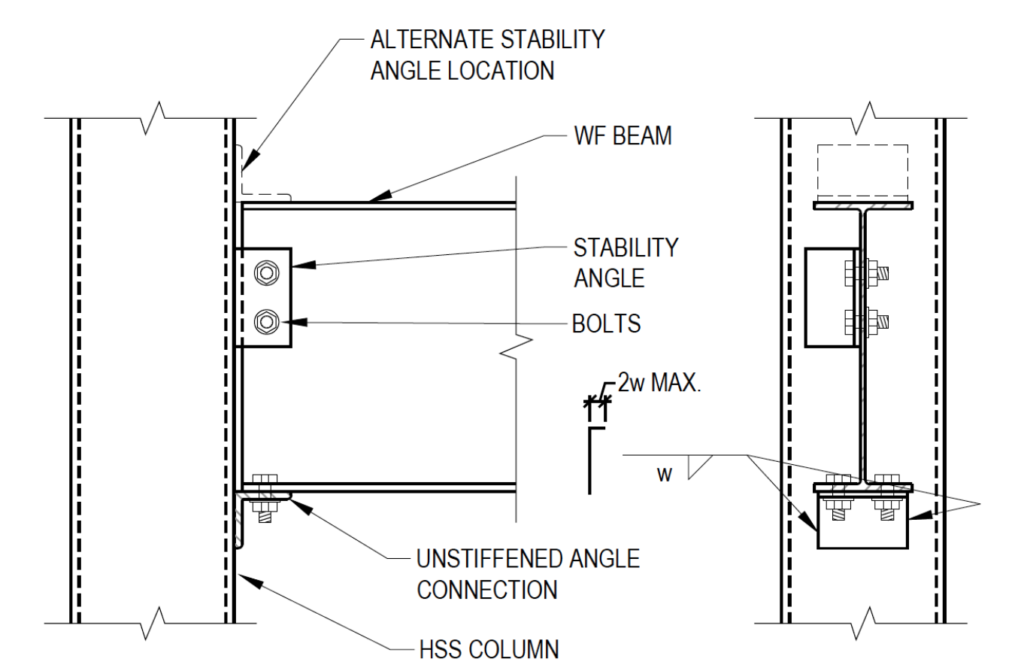
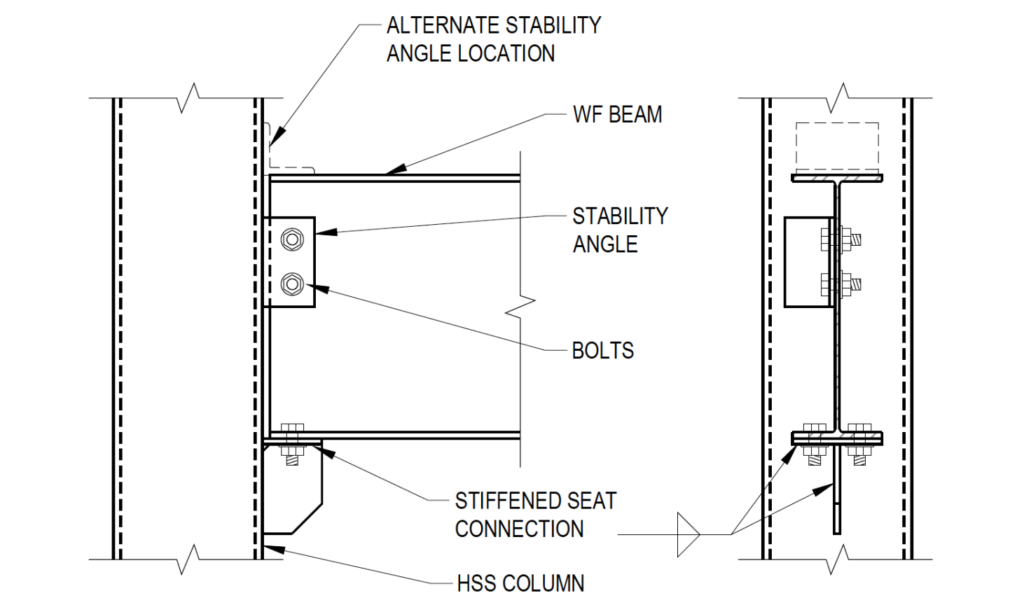
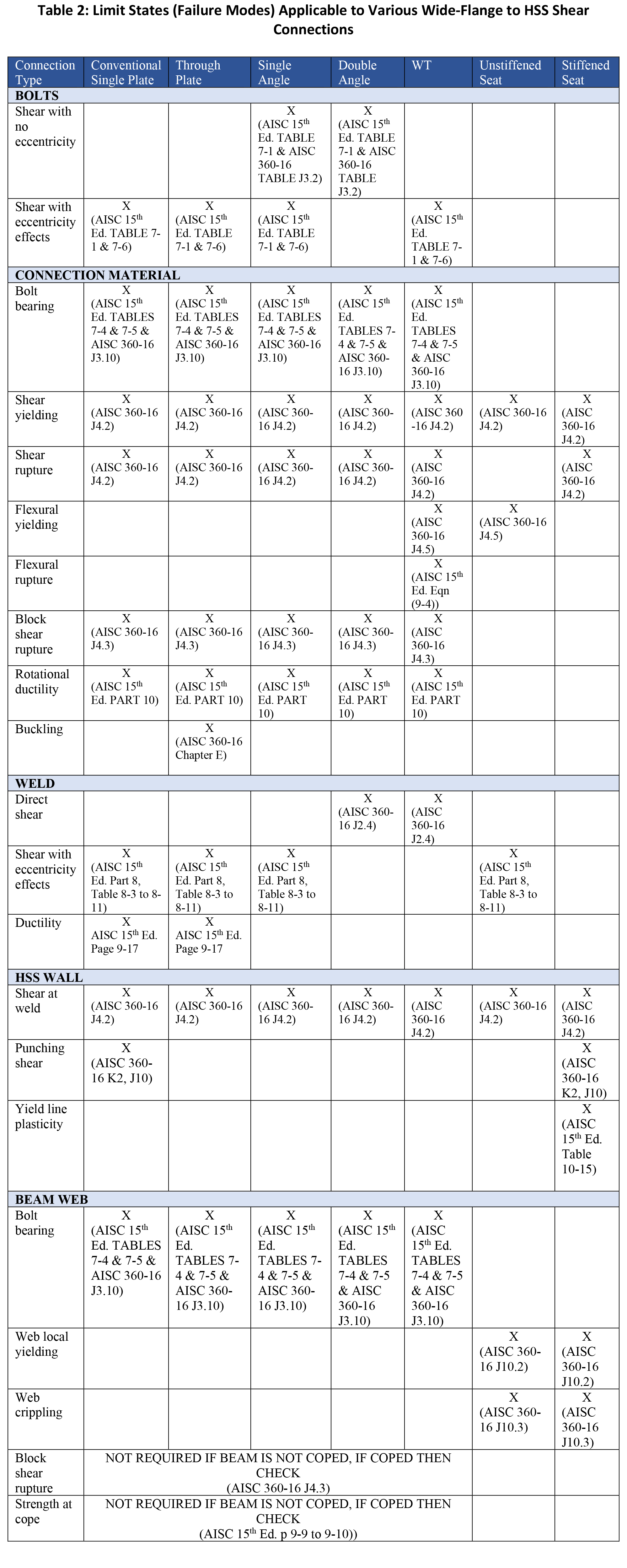
References
- AISC, 2016. “Specification for Structural Steel Buildings,” ANSI/AISC 360-16, American Institute of Steel Construction, Chicago, IL.
- STI, 2016. “HSS Design Manual, Volume 3: Connections at HSS members,” Steel Tube Institute.
September 2019